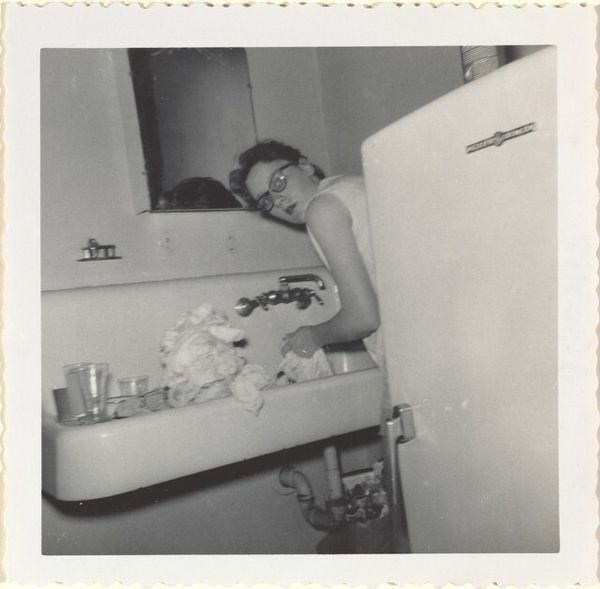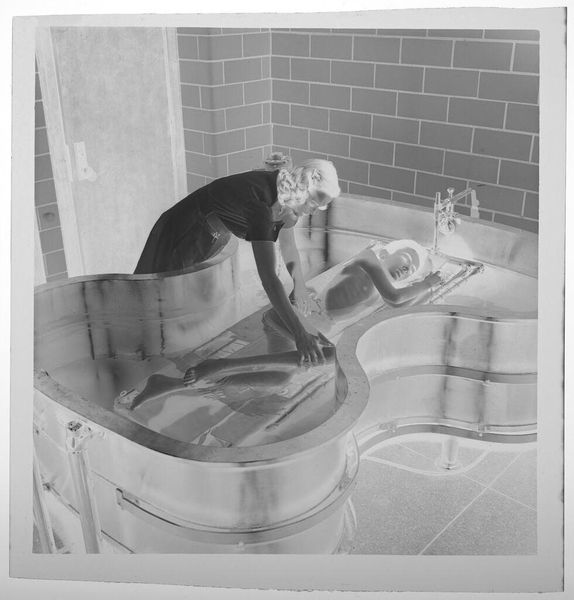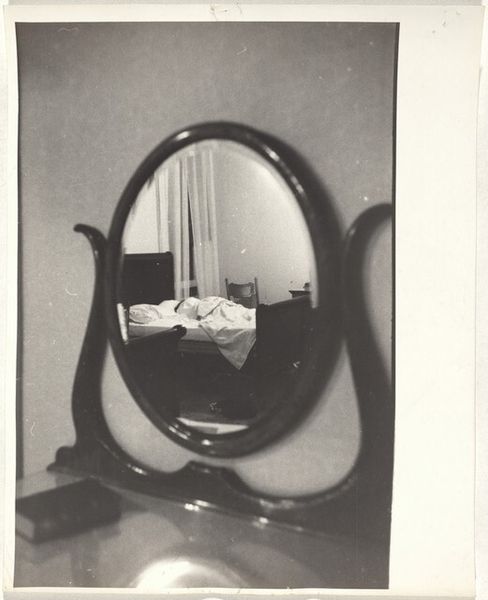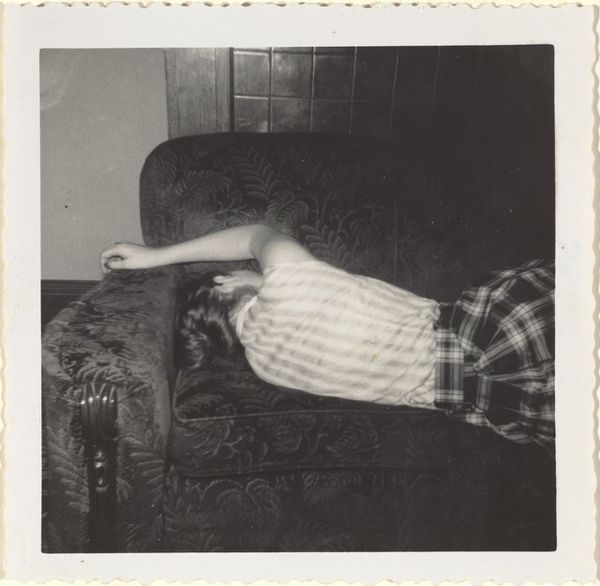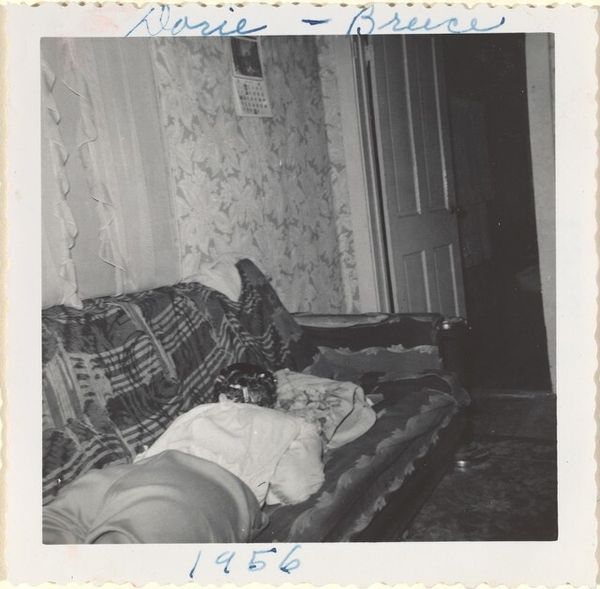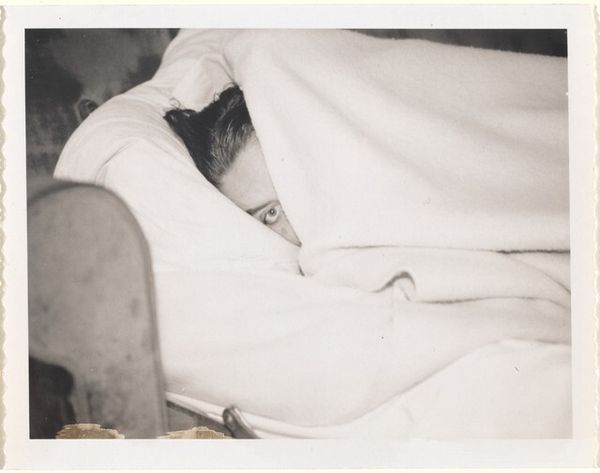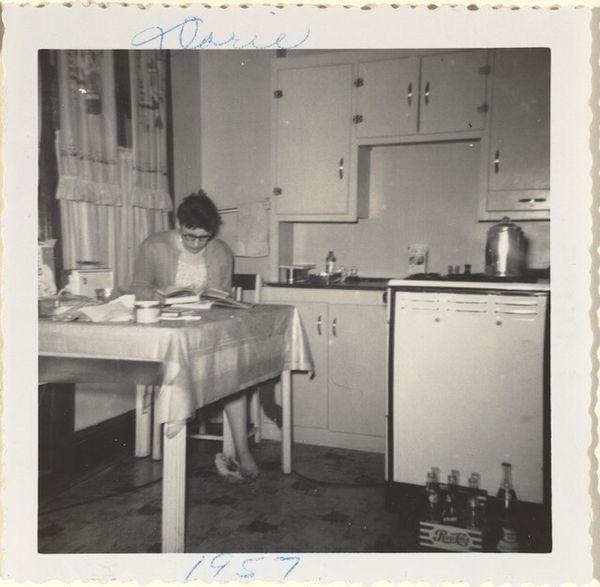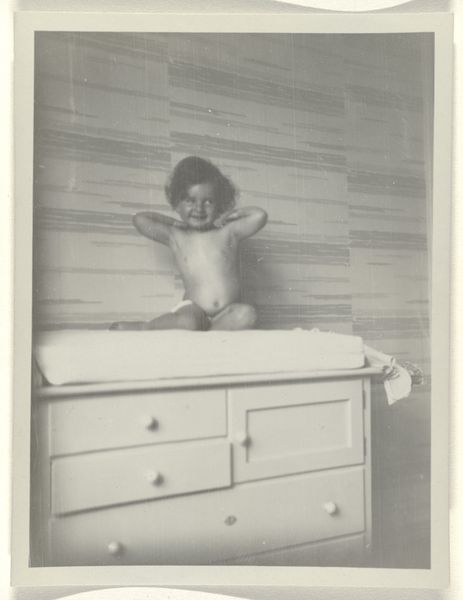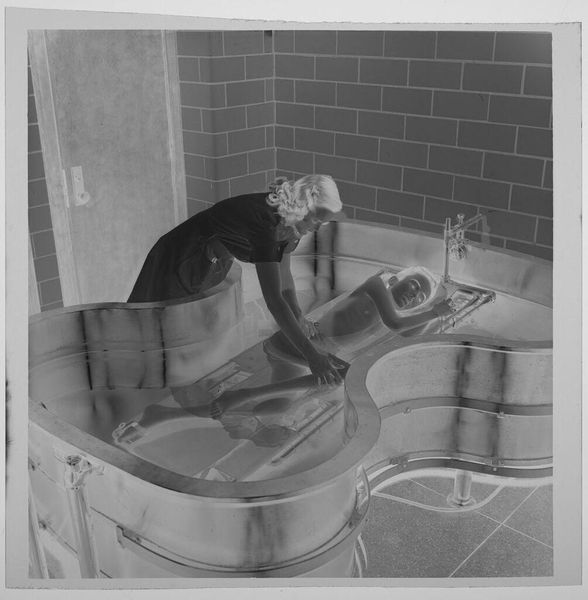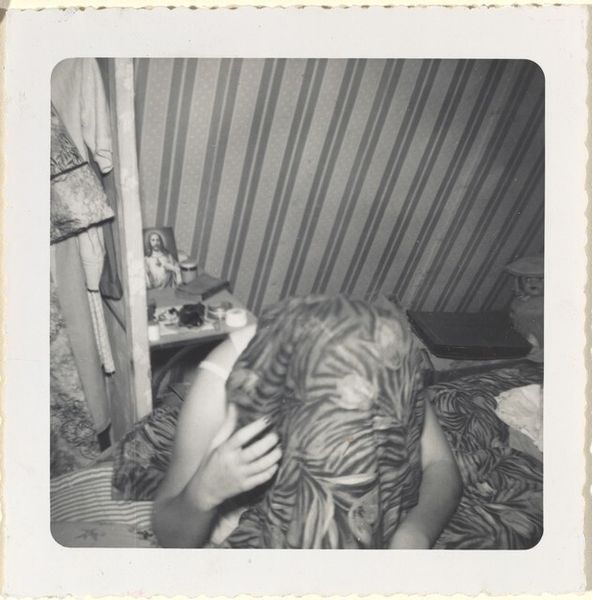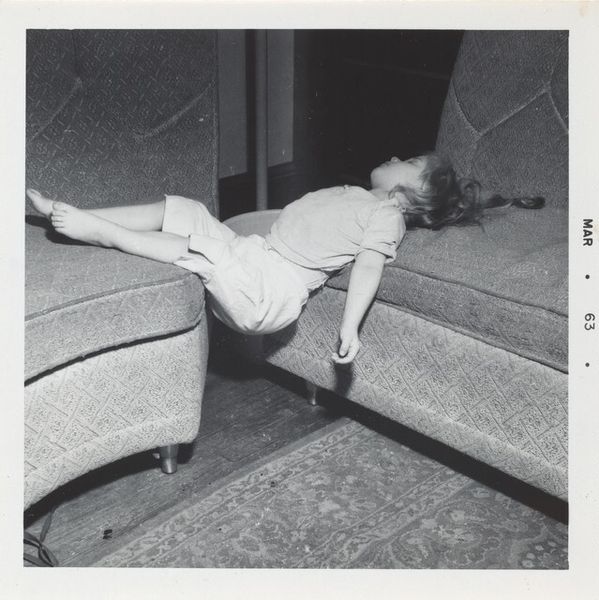
photography, gelatin-silver-print
#
portrait
#
print photography
#
archive photography
#
photography
#
historical photography
#
gelatin-silver-print
#
genre-painting
#
realism
Dimensions: image: 7.6 x 7.8 cm (3 x 3 1/16 in.) sheet: 8.8 x 9 cm (3 7/16 x 3 9/16 in.)
Copyright: National Gallery of Art: CC0 1.0
Editor: We’re looking at "May 1957 Dorie," a black and white gelatin silver print photograph from 1957. The composition feels really intimate, almost voyeuristic. It’s a woman bent over a sink. What do you see in this image? Curator: The materiality here is key. It's a gelatin silver print, which means we're looking at a specific, reproducible process. Think about the labor involved: the photographer, the darkroom technician, even the mining of the silver itself. This isn’t just a fleeting image; it’s the result of a complex industrial network. Where was it made and displayed? And, most importantly, consumed? Editor: I hadn't considered the industrial aspect of a photograph like this before, but now that you mention the materials and the labor, I wonder, who was Dorie? What was her relationship to the photographer? Was she a family member or a paid model? Curator: Exactly! Those questions of labor and relationship are central. The photograph gives the illusion of candidness, of "real life", but it still presents us with an artificial construct with constructed realities. Who controlled the means of production and therefore, the final image? Consider the implied narrative in that image—what class, gender and power relations are on display here, mediated by photographic technologies? Editor: So, instead of just seeing a portrait of a woman, we're looking at a document of social and economic forces at play in 1957? Curator: Precisely! It challenges the boundaries between art and lived experience by putting on display labour and material processes otherwise not immediately visible. Editor: That really changes how I look at photographs in general. Curator: Indeed, photographs like this force us to confront those processes in action, embedded as well in our modes of spectatorship, which too must be continually scrutinised and changed.
Comments
No comments
Be the first to comment and join the conversation on the ultimate creative platform.
